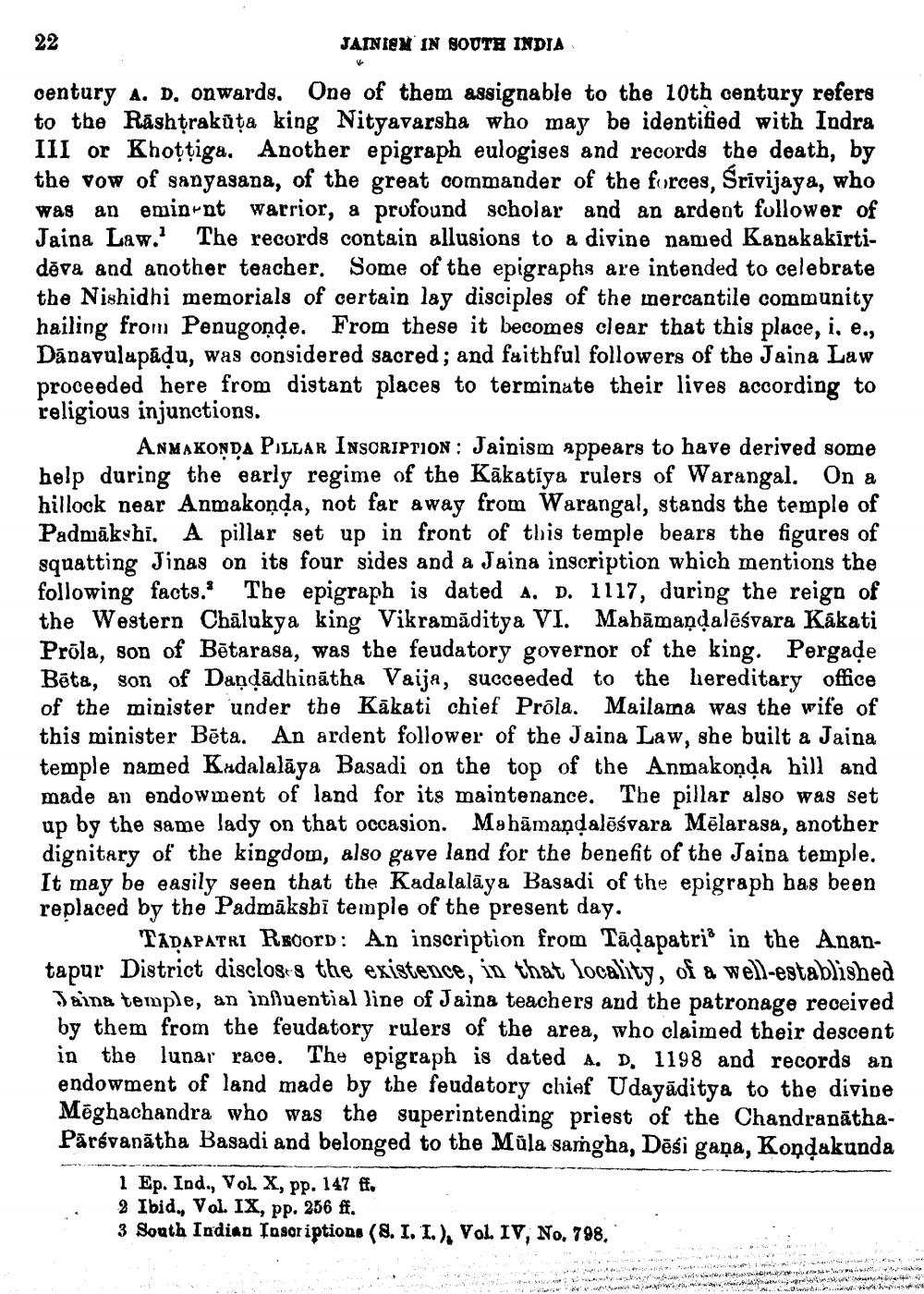________________
22
JAINIEM IN SOUTH INDIA
century A, D, onwards. One of them assignable to the 10th century refers to the Rashtrakūta king Nityavarsha who may be identified with Indra III or Khoțtiga. Another epigraph eulogises and records the death, by the vow of sanyasana, of the great commander of the forces, Srivijaya, who was an emin-nt warrior, a profound scholar and an ardent follower of Jaina Law. The records contain allusions to a divine named Kanakakirtidēva and another teacher. Some of the epigraphs are intended to celebrate the Nishidhi memorials of certain lay disciples of the mercantile community hailing from Penugonde. From these it becomes clear that this place, i, e., Dānapulupādu, was considered sacred; and faithful followers of the Jaina Law proceeded here from distant places to terminate their lives according to religious injunctions.
ANMAKONDA Pullar INSORIPTION : Jainism appears to have derived some help during the early regime of the Kakatiya rulers of Warangal. On a hillock near Anmakonda, not far away from Warangal, stands the temple of Padmākshi. A pillar set up in front of this temple bears the figures of squatting Jinas on its four sides and a Jaina inscription which mentions the following facts. The epigraph is dated A. D. 1117, during the reign of the Western Chālukya king Vikramaditya VI. Mahāmandalēsvara Kakati Prola, son of Bőtarasa, was the feudatory governor of the king. Pergade Bēta, son of Daņdādhinātha Vaija, succeeded to the hereditary office of the minister under the Kākati chief Prola. Mailanna was the wife of this minister Bēta. An ardent follower of the Jaina Law, she built a Jaina temple named Kadalalāya Basadi on the top of the Anmakonda hill and made an endowment of land for its maintenance. The pillar also was set up by the same lady on that occasion. Mahāmandalēśvara Mēlarasa, another dignitary of the kingdom, also gave land for the benefit of the Jaina temple. It may be easily seen that the Kadalalāya Basadi of the epigraph has been replaced by the Padmāksbi temple of the present day.
TADAPATRI Rwoord: An inscription from Tādapatrio in the Anantapur District discloses the existence, in that locality, of a well-established Jaina temple, an influential line of Jaina teachers and the patronage received by them from the feudatory rulers of the area, who claimed their descent in the lunar race. The epigraph is dated A. D. 1198 and records an endowment of land made by the feudatory chief Udayāditya to the divide Mēghachandra who was the superintending priest of the ChandranāthaPārsvanātha Basadi and belonged to the Müla samgha, Dēši gaņa, Kondakunda
1 Ep. Ind., VOL. X, pp. 147 ff. 2 Ibid., Vol. IX, pp. 256 ff. 3 South Indian Insor iptions (8. I. I.), Vol. IV, No, 798.
.
.
.
.
.
.
. whitews
.
..




